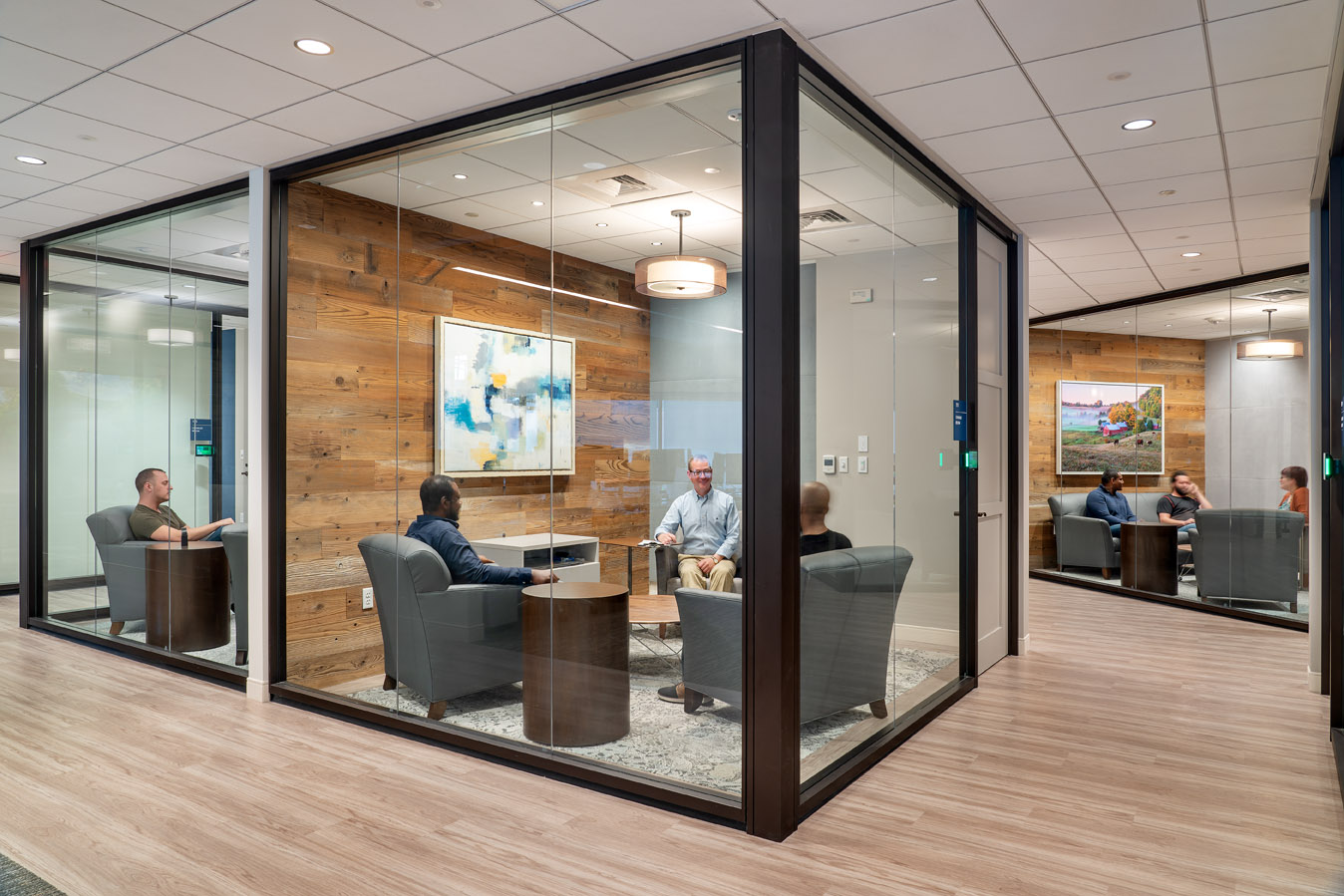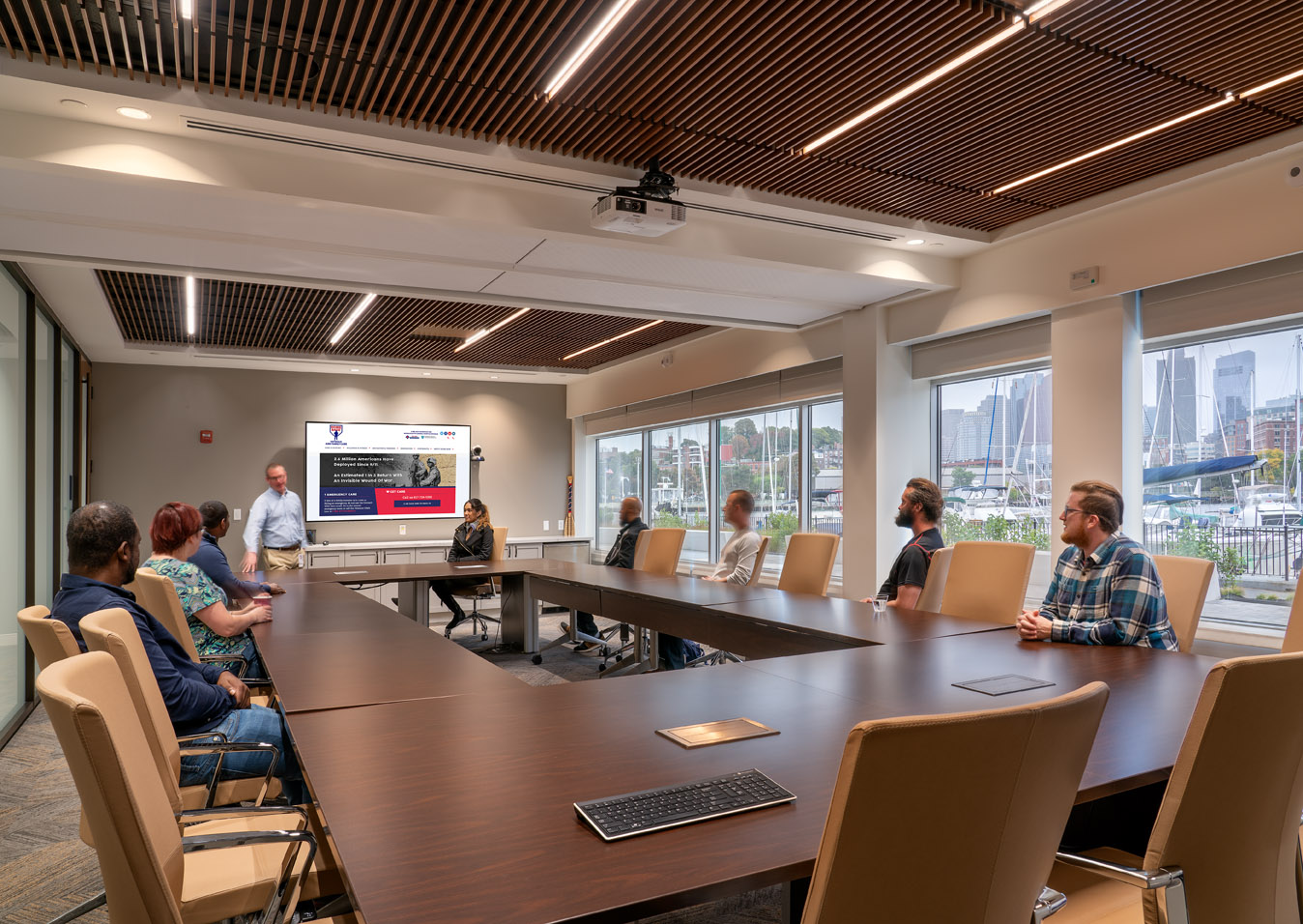For patients seeking treatment for mental health conditions, undesired sound can be a significant stressor interfering with their care and general well-being. Our work in shaping acoustical environments focuses on three themes: room acoustics, sound isolation, and background noise levels.
YOUR CHALLENGES, OUR EXPERTISE
Room Acoustics
In indoor spaces, the room boundaries (walls, floor, ceiling) interact with sound, to amplify or attenuate it, an interaction known as room acoustics. In inpatient behavioral facilities, the need for abuse-resistant and ligature-resistant surfaces can seemingly rule out many conventional sound absorptive materials, but these spaces are in no less need of noise control. Once the design team has identified levels of risk in a patient safety risk assessment, we can work with the design team to identify sound absorptive finishes that are appropriate at various levels of risk.
Sound Isolation
Confidentiality and sound isolation are paramount for spaces where patients are discussing deeply personal matters. To achieve a high degree of confidentiality, we work with the design team to detail wall, glazing and floor-ceiling constructions that safeguard the privacy of these conversations, while achieving safety requirements.
Background Noise Mitigation
Noise from building systems, particularly heating ventilation and air conditioning (HVAC), can generate significant disturbance. On the other hand, a moderate amount of noise can increase the chance for confidentiality and freedom from distraction. Based on industry standards and our experience, we set background noise goals for different spaces in a facility, and subsequently work with the design team to tailor the HVAC system design to meet those goals.
All of these measures taken together will allow for an environment where people feel relaxed, safe and at ease, and where patients can focus on their improvement.



